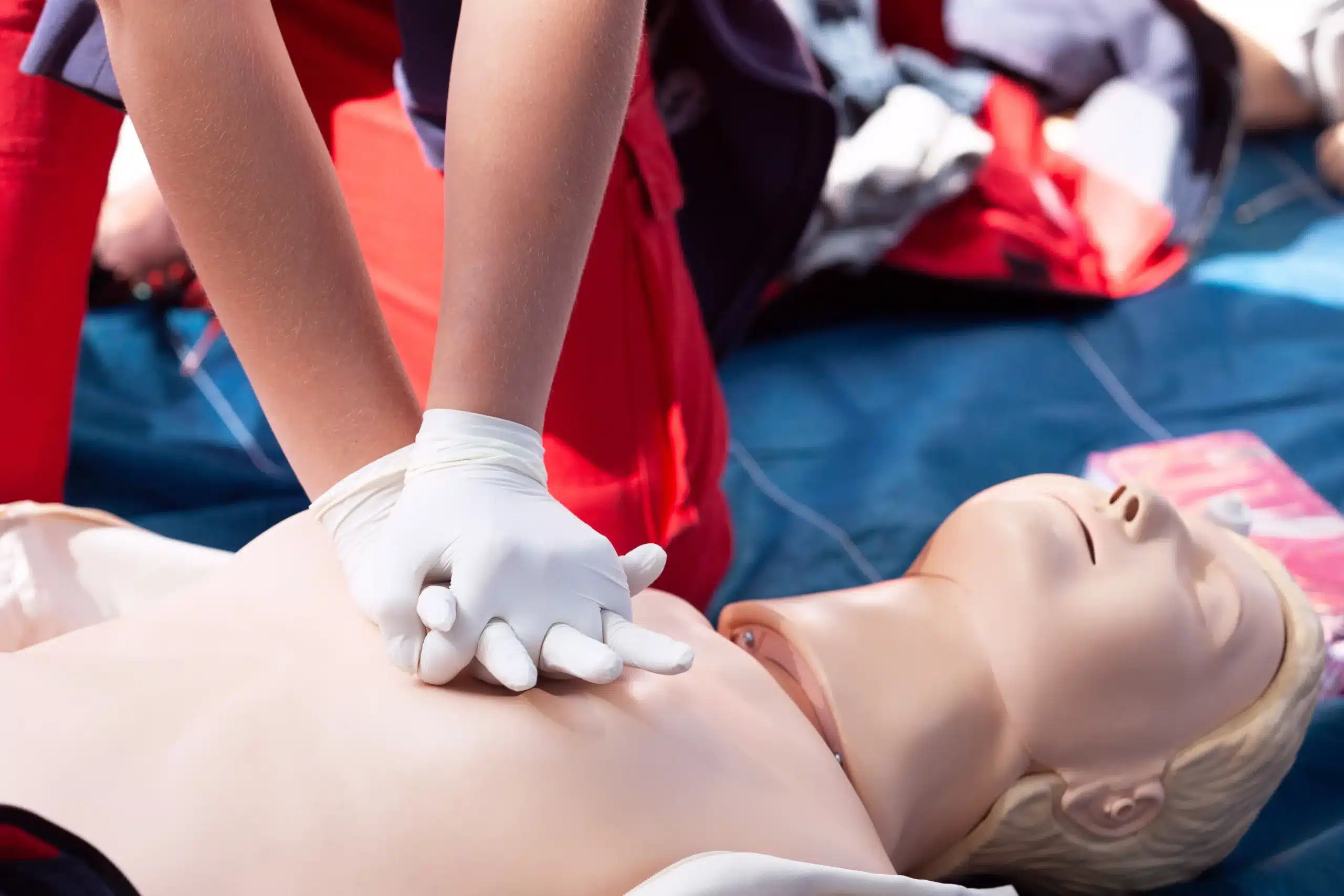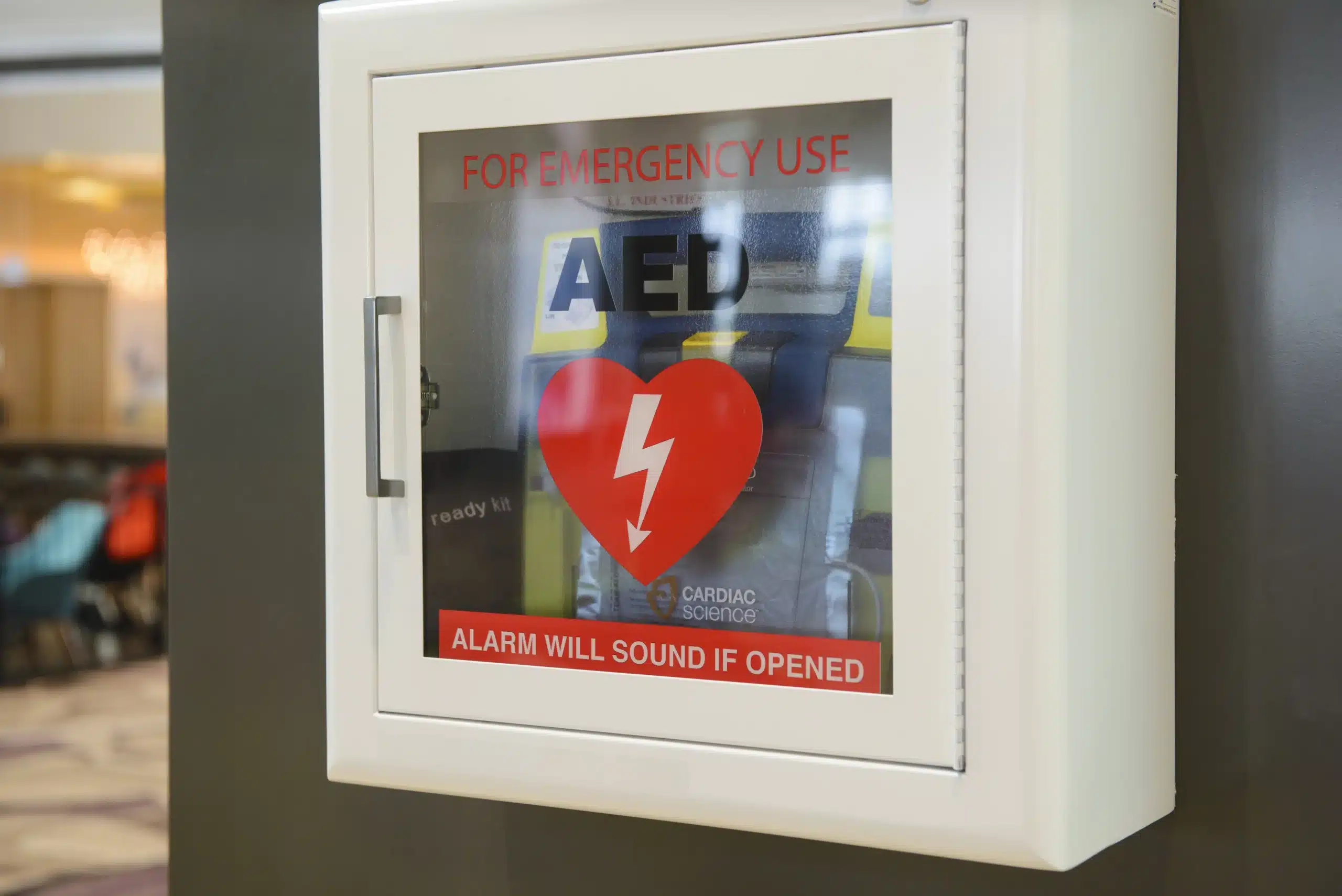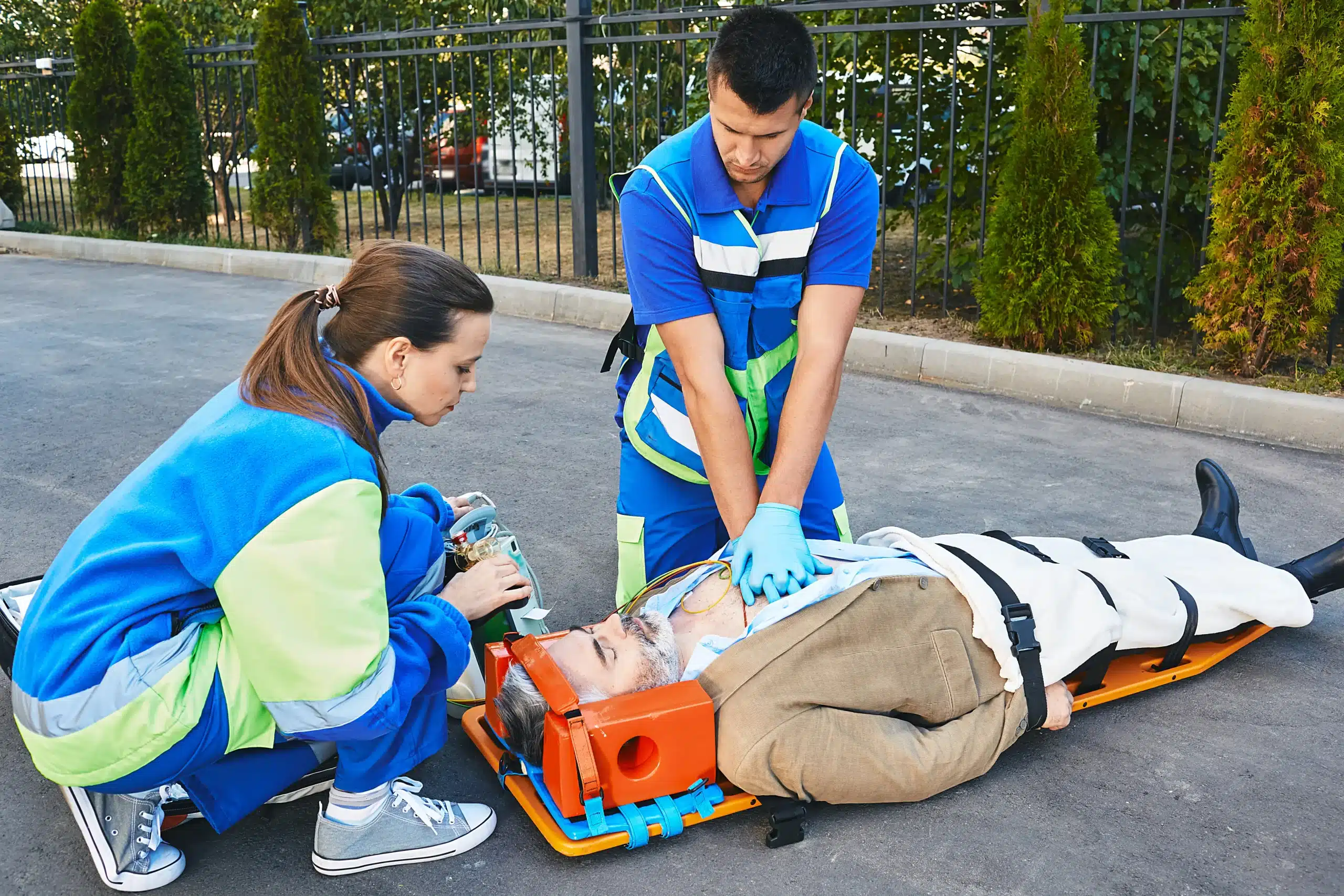San Mateo County, with its stunning coastline and vibrant communities, also faces unique challenges when it comes to emergency preparedness. From earthquakes to wildfires, the region’s diverse geography requires a comprehensive approach to disaster response. That’s why emergency response training in San Mateo is so vital. This post explores the various training programs available to residents, including the Community Emergency Response Team (CERT) program and the Get Ready training. We’ll discuss the specific skills you’ll gain, the benefits of training, and how these programs address the unique challenges faced by San Mateo County. We’ll also clear up some common misconceptions about emergency response training and provide resources for getting involved.
Key Takeaways
- Prepare for emergencies with accessible training: San Mateo County offers free programs like Get Ready and CERT to equip residents with essential skills for various emergencies. Find the right program to boost your confidence and preparedness.
- CERT training builds community resilience: Become a CERT volunteer to gain in-depth disaster response skills and support professional responders during emergencies. Strengthen your community’s ability to handle crises by working together.
- Gain valuable skills and support first responders: Emergency response training provides practical skills applicable to everyday emergencies and large-scale disasters. Empower yourself to protect your family and contribute to a safer community.
What is Emergency Response Training in San Mateo?
Emergency response training in San Mateo equips residents with the skills to handle various emergencies, from earthquakes to fires. These programs emphasize preparedness for local hazards, ensuring individuals can protect themselves, their families, and their neighbors. The training covers essential skills like fire safety, light search and rescue, and basic medical operations. It also stresses the importance of team organization and communication during a crisis. San Mateo County offers several training options to fit different schedules and learning styles, including the comprehensive Community Emergency Response Team (CERT) program and the shorter Get Ready training. Both programs aim to build a more resilient community by empowering residents to take action during emergencies.
Types of Emergency Response Training Programs
Several training programs are available in San Mateo County to equip residents with the skills and knowledge to handle emergencies. Let’s explore two key programs: Get Ready and CERT training.
Get Ready Training
Get Ready, sometimes called “R U Ready,” is a free, two-hour disaster preparedness training offered throughout San Mateo County. This introductory course focuses on teaching you how to prepare for, respond to, and recover from various emergencies, including earthquakes, fires, floods, and power outages. You’ll learn how to create a family emergency plan, assemble a disaster supply kit, and safeguard your home against potential hazards. The program emphasizes personal and family safety, empowering you to take proactive steps to protect yourself and your loved ones. Check the San Mateo County website for information on emergency training programs.
Community Emergency Response Team (CERT) Training
The Community Emergency Response Team (CERT) program provides more in-depth training for individuals interested in assisting their communities during emergencies. CERT training equips participants with basic disaster response skills, enabling them to support professional responders when they may be overwhelmed or delayed. The training covers a wide range of topics, including disaster preparedness, fire safety, basic first aid and medical operations, light search and rescue, and team organization. This comprehensive training empowers community members to effectively respond to disasters and contribute to a more resilient San Mateo. Learn more and register for upcoming CERT training courses on the San Mateo County Fire Department website.
Skills Gained Through Training
Emergency response training equips you with a range of skills to handle various emergencies. From understanding disaster preparedness to performing light search and rescue, these skills empower you to act confidently and effectively in times of crisis. Let’s explore some key areas covered in these training programs.
Disaster Preparedness
Disaster preparedness forms the foundation of effective emergency response. Training programs like the Community Emergency Response Team (CERT) program teach you about potential hazards specific to your region. This includes understanding the risks associated with earthquakes, fires, floods, and other potential disasters. You’ll learn how to create personal and family emergency plans, assemble emergency supply kits, and establish communication strategies for staying connected during a crisis. The goal is to foster a proactive mindset, enabling you to anticipate, prepare for, and lessen the impact of disasters.
Fire Safety and Suppression
Fire safety and suppression training provides essential skills for handling fire-related emergencies. You’ll learn about fire prevention, recognizing fire hazards, and using fire extinguishers. The training also covers understanding fire behavior and how to safely evacuate a building during a fire. This training emphasizes hands-on practice and simulations to build confidence and competence in responding to fire emergencies. CERT training often includes practical exercises in fire suppression techniques, allowing you to apply your knowledge in a controlled environment.
Basic Disaster Medical Operations
Basic disaster medical operations training focuses on providing immediate medical assistance in emergency situations. You’ll learn essential first aid and CPR techniques, including how to control bleeding, manage fractures, and treat burns. The training also covers triage principles, which involve prioritizing medical care based on the severity of injuries. This training is crucial for providing initial support to injured individuals until professional medical help arrives. The curriculum may also cover public health considerations during disasters and managing stress in emergency situations.
Light Search and Rescue
Light search and rescue training equips you with the skills to locate and safely extricate victims trapped in debris or damaged structures. You’ll learn basic search techniques, including visual and auditory searches, and how to use simple tools for removing debris. The training also covers safety precautions to protect yourself and the victims during rescue operations. This training emphasizes teamwork and communication, as search and rescue efforts often involve coordinated actions by multiple responders.
Team Organization and Communication
Effective emergency response relies heavily on clear communication and coordinated teamwork. Training programs emphasize establishing clear communication channels, using appropriate terminology, and following established protocols. You’ll learn about incident command systems, which provide a structured framework for managing emergency response operations. The training also gives you experience working in teams, practicing communication skills, and developing leadership qualities. This training fosters a collaborative environment, enabling you to work together effectively during stressful and demanding situations.
Eligibility and Registration
Ready to get involved in emergency response training in San Mateo? Here’s what you need to know about eligibility and signing up.
Age Requirements and Prerequisites
The Community Emergency Response Team (CERT) program welcomes adults and teens who want to learn essential emergency response skills. If you’re 16 or older, you’re eligible to participate. Those under 18 will need parental consent. The CERT program is designed to accommodate people of all physical abilities, ensuring that our diverse community can participate.
Signing Up for Training
Ready to take the next step? San Mateo County offers free disaster preparedness training to residents. You can find course schedules and registration information online. The CERT program covers a wide range of topics, from understanding potential hazards in our area to developing practical skills for responding to disasters. It’s a valuable opportunity to become better prepared for any emergency.
What to Expect During Training
So, you’ve signed up for emergency response training—great! Here’s a glimpse of what you can expect during your course, whether you’re preparing for CPR certification or taking a deep dive into disaster preparedness with CERT training. It’s a blend of learning the essentials and putting them into practice.
Classroom Instruction
Expect engaging classroom sessions covering key concepts and principles. Instructors will guide you through essential protocols, whether it’s understanding how to perform CPR, learning how to assess a scene, or familiarizing yourself with different types of emergencies. This foundational knowledge provides the framework for effective action during a real-life crisis. For example, in our CPR and First Aid certification courses, you’ll learn the latest AHA guidelines for performing CPR on adults, children, and infants. Our BLS course provides healthcare providers with the skills to respond to life-threatening emergencies. These courses equip you with the knowledge you need to act quickly and confidently in critical situations.
Hands-on Practice and Simulations
Beyond the classroom, you’ll participate in hands-on training and realistic simulations. This is where you’ll put your knowledge into action, practicing techniques like bandaging wounds, using fire extinguishers, or performing CPR on mannequins. These simulations offer a safe environment to build muscle memory and confidence, preparing you to respond effectively under pressure. Our ACLS course for healthcare professionals includes simulated cardiac arrest scenarios, allowing participants to practice advanced life-saving techniques. For those interested in community-level emergency response, CERT training includes simulated disaster scenarios, providing hands-on experience in search and rescue, triage, and disaster medical operations. This practical experience is invaluable in bridging the gap between theory and real-world application.
Benefits of Emergency Response Training
Knowing how to react in a crisis can make all the difference. Emergency response training offers significant benefits, from personal preparedness to community-wide resilience. Let’s explore some key advantages:
Personal Preparedness and Confidence
Emergency response training empowers you with the skills and knowledge to handle crises effectively. The Get Ready training offered by San Mateo County, for example, teaches you how to prepare for, protect yourself, and support your family and community during emergencies. This training builds confidence, reducing fear and uncertainty during stressful situations. You’ll gain practical skills like first aid, CPR, and fire safety, equipping you to respond effectively to various emergencies. This preparation can bring peace of mind, knowing you have the tools to handle unexpected events.
Community Resilience and Teamwork
Programs like the Community Emergency Response Team (CERT) are vital for building community resilience. CERT training provides residents with basic disaster response skills, creating a network of trained volunteers. These volunteers can work together during emergencies, assisting their neighbors and supporting professional first responders. This teamwork fosters a stronger sense of community and shared responsibility for safety. This collaborative approach strengthens the entire community’s ability to cope with and recover from disasters.
Supporting First Responders
CERT training not only prepares individuals but also allows them to directly support professional first responders. As the SMC Fire Department points out, CERT volunteers can provide crucial assistance during emergencies, offering useful information and helping with non-emergency tasks. This frees up professional first responders to focus on more complex and critical situations, maximizing the overall effectiveness of the emergency response. This collaboration is essential, especially in large-scale emergencies, ensuring a more coordinated and efficient response. By supporting first responders, CERT volunteers play a crucial role in ensuring the safety and well-being of their community.
Addressing Common Misconceptions
It’s easy to misunderstand the role of community emergency response training. Let’s clear up a few common misconceptions:
Scope of Emergency Response Training
Community emergency response training (CERT) programs like those offered by the San Mateo County Fire Department focus on preparing individuals to support professional responders. It’s important to remember that EMTs and paramedics are highly trained medical professionals who provide pre-hospital care. CERT training complements their work—it doesn’t replace it. Think of
Who Benefits from Training
While medical professionals certainly benefit from regular training and certifications like BLS and ACLS, CERT training offers valuable skills to a much broader audience. Anyone can participate, from teachers and parents to office workers and retirees. The skills you gain can apply to various situations, not just large-scale disasters. Knowing basic first aid and how to respond to a fire can be invaluable in everyday emergencies. CERT training also emphasizes team organization and communication—skills useful in any community setting. In San Mateo County, CERT graduates are even sworn in as Disaster Service Workers, highlighting their valuable role in supporting community resilience. Learn more about the CERT program and its impact from the South Skyline Emergency Preparedness Organization.
Ongoing Skill Development
CERT training isn’t a one-time event. It’s the start of a journey toward greater preparedness. Graduates are encouraged to continue practicing their skills and stay informed about potential hazards in their area. This might involve participating in refresher courses, drills, or volunteering. The goal is to maintain a state of readiness so you can effectively assist your community during an emergency. Remember, even after a disaster, trained individuals play a crucial role in documentation, providing support, and coordinating volunteers. The San Mateo County Fire Department CERT program provides resources and opportunities for ongoing skill development.
Challenges and Considerations in San Mateo County
San Mateo County’s unique landscape presents specific challenges that underscore the importance of emergency response training. Understanding these challenges helps us appreciate the value of community preparedness and the role of training programs like CERT.
Geographic Vulnerabilities
San Mateo County’s varied terrain, from coastal areas to mountainous regions, creates unique vulnerabilities. These geographic factors can impact emergency response times and complicate rescue efforts during natural disasters like earthquakes, wildfires, and floods. The San Mateo County Civil Grand Jury recognizes these challenges and recommends that every city and town actively promote Community Emergency Response Team (CERT) training, aiming to train at least 5% of households. This proactive approach is essential for building a resilient community capable of handling diverse emergencies.
Community Coordination
Effective emergency response relies heavily on coordinated efforts. San Mateo County’s Department of Emergency Management (DEM) facilitates this coordination through a Joint Powers Agreement involving multiple cities and the County itself. This collaborative structure, governed by an Emergency Services Council, ensures a unified approach to emergency preparedness and response. CERT training plays a vital role, enabling community members to effectively assist first responders during emergencies, providing crucial support and real-time information.
Accessibility and Inclusivity
Ensuring that emergency preparedness training is accessible to all residents is a priority in San Mateo County. The County offers free training options, including the two-hour introductory Get Ready Training course on disaster preparedness. This commitment to accessibility aims to empower all community members with essential skills. The CERT program builds upon this foundation, providing more in-depth training tailored to local hazards. These initiatives foster a more inclusive and prepared community, strengthening overall resilience.
Resources and Support for Trained Responders
Once you’ve completed your emergency response training, you’ll want to know how to maintain your skills and connect with local resources. Here’s what you need to know about equipment, credentials, ongoing training, and local agencies in San Mateo County.
Equipment and Credentials
Depending on the program you complete, you may receive equipment or credentials. For example, CERT graduates in San Mateo County are sworn in by the County Sheriff’s Office as Disaster Service Workers (DSW), according to the South Skyline Emergency Preparedness Organization. This official recognition highlights the valuable role trained volunteers play in disaster response. Check with your specific training program for details on what credentials or equipment you might receive.
Ongoing Training
Maintaining your skills is crucial for effective emergency response. The Community Emergency Response Team (CERT) Program emphasizes ongoing training to keep skills fresh and knowledge current. Refresher courses and advanced training are often available through local agencies and organizations. These programs cover various topics, from fire safety and light search and rescue to disaster medical operations and team organization. Staying involved after your initial training ensures you’re always prepared.
Local Emergency Management Agencies
Connecting with local emergency management agencies is key for trained responders. San Mateo County’s Department of Emergency Management (DEM) plays a vital role in coordinating disaster response. The DEM is funded through a Joint Powers Agreement between twenty cities and the County, governed by an Emergency Services Council. Understanding how these agencies operate and how you can contribute is essential for effective community disaster preparedness. Reach out to your local DEM to learn about volunteer opportunities and how to stay informed during emergencies.
Get Involved in Emergency Response
Want to take a more active role in keeping your community safe? San Mateo County offers excellent programs that empower residents to prepare for and respond to emergencies. These programs provide valuable training and connect you with a network of like-minded individuals dedicated to community safety.
One such program is Get Ready training. This free, two-hour course covers the essentials of disaster preparedness, teaching you how to protect yourself, your family, and your neighbors in an emergency. You’ll learn how to create a family emergency plan, assemble a disaster supply kit, and understand the different types of hazards that could impact San Mateo County.
If you’re ready to go a step further, consider joining the Community Emergency Response Team (CERT). The CERT program provides more in-depth training in disaster response skills, such as fire safety, light search and rescue, and basic medical operations. CERT volunteers are an invaluable resource in the critical hours after a disaster, providing support until professional responders arrive. The program is open to anyone aged 16 or older (parental permission is required for those under 18). After completing the CERT training, graduates are sworn in as Disaster Service Workers (DSW) by the County Sheriff’s Office.
Related Articles
- First Aid Training Courses in San Mateo: A Complete Guide
- CPR & First Aid in San Mateo: Your Certification Guide – San Mateo CPR Classes
- CPR Training in San Mateo: Your Complete Guide – San Mateo CPR Classes
- CPR Certification for School Staff in San Mateo: A Practical Guide – San Mateo CPR Classes
- Pediatric CPR & First-Aid Training in San Mateo – San Mateo CPR Classes
Frequently Asked Questions
What is the difference between Get Ready and CERT training?
Get Ready training provides a basic overview of disaster preparedness in a short, two-hour session. It’s a great starting point for learning about personal and family safety during emergencies. CERT training, on the other hand, is a more comprehensive program that equips you with specific skills to assist your community during a disaster. It involves a deeper dive into topics like fire safety, search and rescue, and medical operations.
How can I register for emergency response training in San Mateo County?
You can find registration information for both Get Ready and CERT training on the San Mateo County websites. Look for the Office of Emergency Services or the Fire Department website for specific details on upcoming courses and how to sign up. These programs are typically offered free of charge to San Mateo County residents.
What kind of skills will I learn in CERT training?
CERT training covers a wide range of skills, including fire safety and suppression, basic disaster medical operations, light search and rescue, team organization, and disaster preparedness. You’ll learn how to use fire extinguishers, perform basic first aid, conduct searches for missing persons, and work effectively as part of a team during a disaster.
Who can participate in CERT training?
CERT training is open to adults and teenagers aged 16 and older. Parental consent is required for participants under 18. The program is designed to be inclusive and welcomes individuals of all physical abilities. No prior experience in emergency response is necessary.
How does CERT training complement the work of professional first responders?
CERT volunteers provide essential support to professional first responders, especially during the initial hours after a disaster. They can assist with tasks like damage assessment, search and rescue, and basic first aid, freeing up professional responders to focus on more complex or critical situations. CERT volunteers are a valuable community resource, extending the reach and effectiveness of emergency response efforts.





